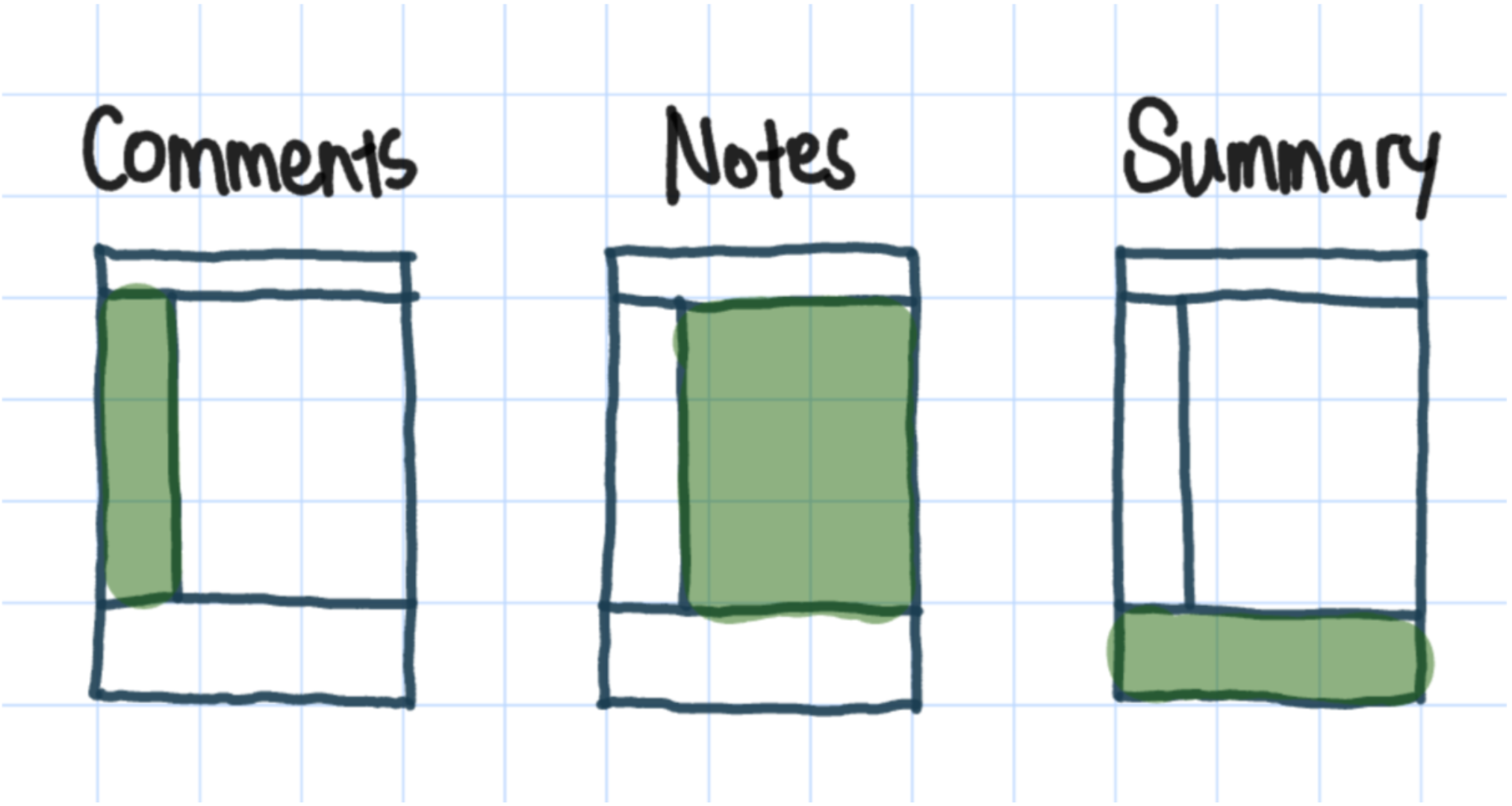Vancouver +1(604) 628-5783
Prominent Study Techniques: The Good and the Not So Good
November 12, 2021

THE GOOD
Cornell Note Taking
The Cornell Note Taking Technique was created by Cornell University professor Walter Pauk, as the name suggests. Research has shown that the Cornell Note Taking approach can be helpful in learning where synthesizing and knowledge application are required, according to research. As seen in the image below, this approach necessitates the separation of notes into two rows and two columns. The first column should be filled with note-related comments or keywords. The main notes should be placed in the second column of the first row. These remarks should be brief, shortened, and, if necessary, paraphrased. Fill up the second row with a quick description and summary of the major points. This approach of taking notes should be used on each page of notes.
The first column should be filled with note-related comments or keywords. The main notes should be placed in the second column of the first row. These remarks should be brief, shortened, and, if necessary, paraphrased. Fill up the second row with a quick description and summary of the major points. This approach of taking notes should be used on each page of notes.
Mind Mapping
Mind maps are one of the most effective note-taking tools available. This technique is particularly beneficial for visual learners. According to research, mind maps operate best when dealing with complex and difficult-to-understand content (concepts?). Mind maps are used to emphasize important information and illustrate links between things, as well as to generate fresh thoughts about a topic. It's critical to make use of visualisation in mind maps by employing short words and phrases, distinct colours for various themes, and symbols and visuals. Finally, when creating mind maps, be as creative as possible; the more fun you have, the more you'll remember what you've created.THE NOT SO GOOD
Pulling All-Nighters
For the most part, cramming the night before a test may work for certain people, but it is an unproductive study strategy for the majority. To be able to deep process what you're learning, your brain needs more than one night to digest all the information. In contrast to deep processing, when pulling all-nighters, your brain will most likely just analyze information on a surface level, a process known as shallow processing. You won't be able to completely comprehend what you're studying if you use this processing approach, which might be disastrous when faced with problem-solving tasks on an exam. Sleep deprivation also has an impact on your exam performance. According to the Sleep Foundation, students who sleep more do far better in tests than those who sleep less. People who sleep less miss out on the REM stage of sleep, which is especially critical while studying for exams. Rather than staying up all night to study, there are plenty of better strategies to pass a test without cramming the night before, such as taking thorough notes and revising after each lesson.Excessive Highlighting
Highlighting is the most common study practice for students since it’s quick, simple, and colourful. However, the majority of individuals have been utilizing highlights incorrectly. The following are some examples of errors to be aware of:- Highlighting before reading. The purpose of highlighting a text is to draw attention to important parts of it. Without first reading the entire text, highlighting would be pointless and even be distracting. Be sure to highlight just the most significant information, not the entire text.
- Using too many colours. Using too many colours to highlight a page might make you feel overwhelmed. Instead, stick to three distinct colours that are both eye-catching and readable.
- Replacing your notes with highlighting. Many studies have shown that highlighting as a sole method of learning is ineffective when compared to taking notes. Rather than just marking your textbook and calling it a day, use the highlighted phrases to create notes by paraphrasing. You could even utilize the Cornell Note Taking method to make notes out of your highlights.
If you keep these study methods in mind, you won’t have to worry about whether or not the way you study will actually help you learn. So go ahead and give them a try!
Written by Jaxine Kurniawan
